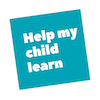Why is Orton-Gillingham Recommended for Teaching Dyslexics?
Educational and dyslexia experts tell parents that dyslexic children should be given Orton-Gillingham teaching, but many people are confused by the term. They don’t realize that Orton-Gillingham refers to a style of teaching, rather than a specific class.
Orton-Gillingham: What You Need to Know
The Orton-Gillingham approach was developed based upon work from Samuel Orton and Anna Gillingham, back in the early 20th century. It’s been in use for over 80 years. Orton and Gillingham devised a program that directly and systematically teaches dyslexic children to connect sounds to letters. The OG program is methodical and structured, building up to phonics, and then words over time.

Orton-Gillingham was the first teaching method to teach through different channels at the same time. Students hear, see, touch, and make movements in order to learn. This multisensory learning approach helps dyslexic students visualize, link sounds to a symbol, and remember.
What Does the Orton-Gillingham Approach Look Like?
As the parent of a dyslexic child, you’re probably familiar with how difficult it is for your child to memorize. Linking sounds to letters and words is one of the most difficult skills for dyslexic students, so the Orton-Gillingham instruction also uses the following techniques:
Direct and Explicit: OG teaches rules and patterns clearly and directly.
Systematic and Structured: OG presents new knowledge in a consistent, structured fashion. Students follow a set of steps in order to learn.
Sequential and Cumulative: OG lays the pathway to learning out in advance. OG first teaches simple, and then more complex rules and information.
Multisensory: OG techniques introduce information through as many different senses as possible. If a student has problems with memory or learning, this type of parallel multi-sensory learning helps to get information into memory.
Individualized: OG programs are fit to each individual student’s abilities and learning speed. Students must learn facts until they become automatic, before moving to the next step.
Diagnostic & Prescriptive: The tutor or teacher monitors performance and skill development at each stage. Based upon observations, teaching is modified to be more effective.
Here’s an introduction to the Orton-Gillingham approach.
Studies have proven that this sort of direct, explicit, multisensory, and sequential teaching supports how dyslexics learn. Orton-Gillingham programs were designed for a one-on-one instruction model, but can also be used in small groups and classrooms.
The Academy of Orton-Gillingham practitioners has a free introductory course here.
Learning Abled kids has a free introduction to multisensory learning instruction and learning styles.
This is what an Orton-Gillingham session looks like:
Which Orton-Gillingham Program is Best?
There are many different Orton-Gillingham-based reading programs, and it’s impossible to identify one as being “best.” Some of the things that you might want to take into consideration are:
Will the school be teaching the class? Or will you be homeschooling with it? Will you have to hire a tutor? There are different programs for each option.
This section contains some very good overviews and comparisons of various programs.
The Learning Abled Kids website contains an overview of Orton-Gillingham reading programs.
The Homeschooling for Dyslexia website compares the four top Orton Gillingham reading programs: Barton, Logic of English, All about Reading, and Reading Horizons.
The Seasons of Learning website compares the Wilson Reading system versus Barton Reading and Spelling.
Our Help My Child Learn Orton-Gillingham page lists many different types of Orton-Gillingham programs (and Orton-Gillingham influenced programs) that you can use. We even include some programs that are only slightly multisensory as well.
What Should My School Know about OG and Dyslexia?
The Stern Center has an excellent article talking about what schools need to know about OG teaching.
The Learning Ally website provides an example of what a successful dyslexia program looks like.
How Do I get the School to Provide an Appropriate Reading Program?
Experts say that OG programs are the most effective way to teach dyslexic students. Yes, there are studies backing that statement, as shown in this article by the National Center on Improving Literacy.
Structured Literacy is another accepted method, as described in this page from the Understood website, talking about research that supports OG.
Here’s an article from the Wrightslaw legal advice for LD parents website that helps a parent get support to pressure her son’s school to use OG correctly. In this case, Wrightslaw lawyers have three suggestions for getting support.




Thank you for this!
We’re glad you like it.